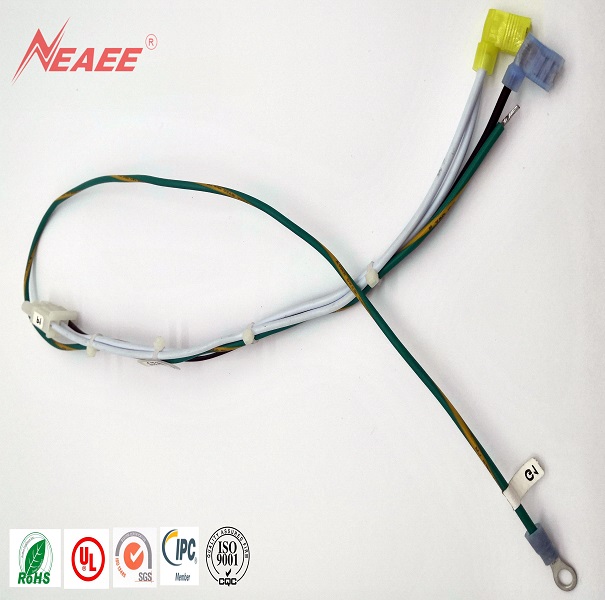A wire harness is a bundling system specifically designed to organise numerous wires or cables together. Instead of hand-wiring and connecting each individual wire bundle, the harness is cut to length, bundled and clamped to a terminal or connector housing to form a single unit. This compact, organised arrangement allows for straightforward installation to reduce labour time and human error, and enables technicians to fit complex wiring assemblies into small or hard-to-reach spaces.
Wiring harnesses involve dozens of individual overmoulded wires that branch in different directions and at different connection points. Because of their often complex design, low-quality harnesses can have some serious problems, especially at the terminal connections. Without connectors, there is no electricity. This is why high-quality harness connectors are a sign of a reliable, well-manufactured product.
When selecting high-quality connectors for your wire harness, function should dictate design features. Herein lies the problem. Without a working knowledge of how every connector component contributes to performance, developers often end up with a poor wire harness design product.
Contacts are one of the most common points of failure in wire harness connectors. Contacts are tiny metal pins and parts that touch to form an electrical connection. If the connector is not properly protected, contacts can become grimy or corroded, which will affect the flow of electricity. Additionally, the contacts within wire harness connectors have a finite life span. If contacts are not designed for the number of mating cycles required, they can lose their springiness over time, causing the connector to fail prematurely.

The overmolding material used to protect the connector will also significantly influence the life span of a wire harness system. Material selections are based on environmental conditions and the mechanical demands of the application.
Most wire harnesses use a crimping technique to adjoin wires to connectors or terminals. Crimping involves the use of a specialized tool to create a gas-tight fusion between the two parts. However, if the incorrect technique is applied, loose crimps can allow moisture to penetrate the joint and cause corrosion. As a result, wire harnesses can experience short circuits, open circuits or total electrical failure.
Strain relief is another issue common in low-quality wire harness connectors. Strain relief is a design feature that allows for the transfer of force in any direction to enhance the mechanical strength of the connection. If a connector doesn’t possess enough strain relief for the application, the wiring can pull apart from adjoining terminals.
As a wire harness supplier,Xiamen New East Asia Electronic Enterprise Co. (NEAEE), Ltd. is a contract manufacturing company established in the year of 2000. We are currently certifiied to ISO9001:2016, ISO13485:2015 and UL. If you want to get more information about custom harness,please contact us.
Copyright © Xiamen New East Asia Electronic Enterprise Co. (NEAEE), Ltd. All Rights Reserved Sitemap |